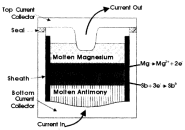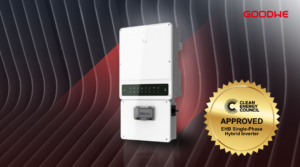There’s plenty of wind and plenty of sun to go around – more than enough to provide all the world’s electricity needs, even using existing wind energy and solar power technology. The problem is that the sun doesn’t always shine and the wind doesn’t always blow. We need to be able to store nature’s energy potential for those times in an economically and environmentally friendly way.
Deep cycle battery technology has come a long way, enabling people living off grid to enjoy more comfortable lifestyles. However, a deep cycle battery bank is a major investment and the batteries need replacing far earlier than the solar panels that provide the power. For energy storage on a larger scale, molten salt batteries also show a lot of potential; but they don’t store electricity – they store heat which can then be turned into electricity; requiring additional equipment.
A team at MIT is currently working on a new approach to deep cycle batteries using chemical reactions of liquid materials that could be applied to small and large scale energy storage applications.
In a traditional deep cycle battery, lead plates are suspended in electrolyte – over time the lead plates dissolve and become sulphated which then renders the battery useless. In the MIT team’s liquid battery design, the unit consists of of three liquids – molten magnesium, antimony and sodium sulfide. As these liquids have have different densities they form separate layers inside the battery. The molten magnesium and antimony act as electrodes and the sodium sulfide plays the role of an electrolyte.
As the battery charges, the magnesium ions pick up electrons and rise to the top the battery. The antimony ions lose electrons and sink to the bottom. When the battery is discharged, the layering reverses.
The advantages of the liquid battery, aside from the lack of lead electrodes, include the ability to accept a charging current ten times more than existing battery technology and according to an entry on the MIT site, would be far cheaper to manufacture. Production of a DC-battery was estimated to cost USD$ 35-60/kWh in 2006 and an AC-compatible system would cost USD $50/kWh to produce.
The original 2006 paper entitled “Technical and Economic Feasibility of a High Temperature Self Assembling Battery” can be downloaded from MIT (pdf). The research is currently being lead by Professor Donald R. Sadoway












































